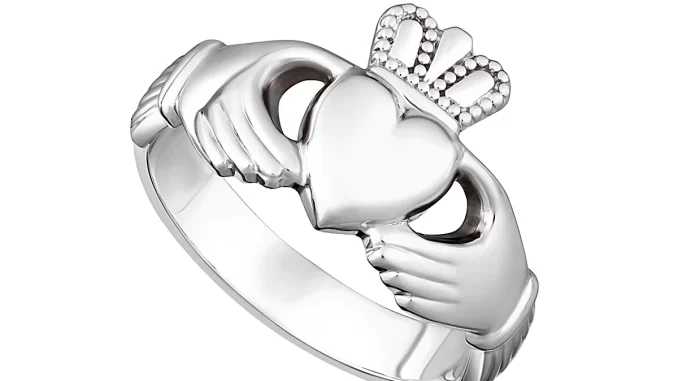
With St. Patrick’s Day right around the corner, it is the perfect time to reflect and honor Irish tradition and history. Chances are you have at least seen the famous Irish Claddagh ring. Originating in the small fishing village of Claddagh, the first ever Claddagh ring is said to have been made by Richard Joyce. After departing from Claddagh to the West Indies the week he was meant to marry the woman he loved, Joyce and his ship were captured by Mediterranean Algerian pirates. Joyce was sold into slavery to a Moorish goldsmith. Here, he learned how to make the famous ring which he intended for his fiancé. In 1689, when King William III came into power in England, Joyce was finally freed and returned home. He gave his fiancé this very special ring and they were married at last. Joyce went on to set up his own goldsmith shop in Claddagh where he made more Claddagh rings, continuing this lovely tradition.
The ring features three key symbols: the hands, the heart, and the crown. The hands which hold the heart are meant to represent friendship. The heart, set at the center of the ring, is meant to symbolize love. The crown which sits atop the heart indicates loyalty. The way one wears the ring denotes one’s current relationship status. If one wears the ring on the right hand with the heart turned outwards, this suggests that the wearer is looking to meet someone. If it is worn on the right hand with the heart turned inward, this signifies that the wearer is spoken for. Lastly, if the ring is worn on the left hand with the heart turned inward, this means that the wearer is in a marriage full of love, loyalty, and friendship. Happy St. Patrick’s Day!